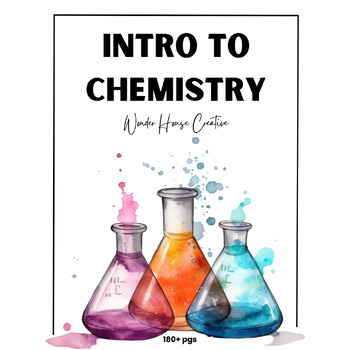Intro to Chemistry
- PDF
Description
My largest and most in depth science unit study is finally being released!
This study is a mammoth at over 180 pages and includes the foundations of chemistry so no prior knowledge is needed. It’s aimed for ages 12-17 but as always with homeschool - you go with what your kids are interested in and capable of! For those curious - it does cover the majority of outcomes for grade 10 chemistry in the SK curriculum.
This study seeks to break down key aspects of chemistry and to provide interesting and creative ways to engage the content. As always, you’ll find a variety of unique activities that allow your students to work with the concepts they’re learning.
Key components of the 30 lessons include:
Concise Readings
Doodle Notes Starters - to get kids writing in their own words, drawing and labelling
Chemistry Journals - to extend thinking about personal connections
Chemistry Labs - carefully curated labs that use easily accessible substances/tools and explicitly demonstrate the concept at hand. Plus, most labs come with a sourced video to compare results.
A full checklist of supplies needed where I’ve linked as many as I can for US and Canada.
A variety of interesting activities such as chemistry beverages, infographic design, magazine cover hunts, process art and more.
Several grading rubrics to aid you in assessing labs and activities.
A final project PLUS an online multiple choice self grading exam on google forms.
Topics include matter, mixtures, atoms, ionic and covalent bonds, redox reactions, writing chemical formulas, Bohr models, valency, balancing chemical equations, acids and bases, electrolysis, rate of reaction and so much more!
This is a very thorough course and I am confident your students will not only gain a solid understanding of chemistry but also have a ton of fun doing it.
Given that this study is over double the size of most of my units and took 4x as long to write, the price will reflect that ☺️.
Timeline: 30 lessons so likely minimum 6 weeks





